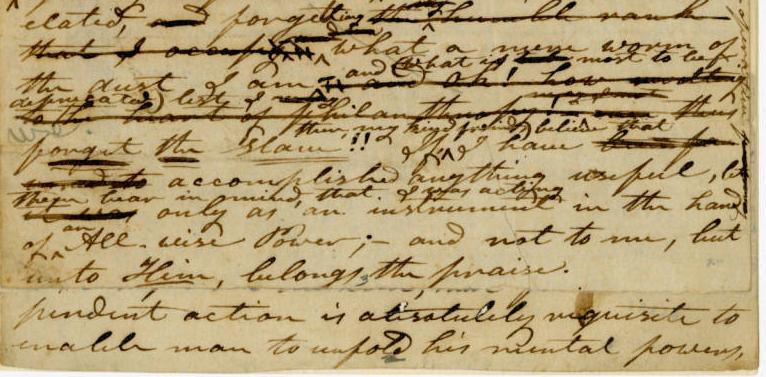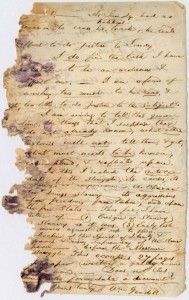“Believe That I Still Remain, Benjamin Lundy,” Part II

Even when Lundy is not writing travelogues, his letters to family, friends and fellow anti-slavery activists convey his rich attention to culture and landscape and keen powers of description –- as evidenced by this effusive passage from a letter addressed from Putnam County, Illinois, where Lundy lived in the 1830s:
According to my fancy, the scenery of this country is beautiful — very beautiful. Extensive undulating plains, clothed in the richest verdure, and variegated with myriads of flowers, dazzle in all the brightness of prismatic splendor, almost everywhere greet the eye of the traveler. In some parts, those delightful plains exhibit a picturesque and enchanting landscape, bounded only by the horizon: — and it reminds one of a view at sea, when the billows are hushed in silence, and the heaving oceans presents its broad undulating surface to the vision of the mariner.
And though we have not, here, the wild and romantic aspect of the mountain regions, where the poetical fancy loves to rove, and the soaring imagination delights to stray, — yet we are cheered with many charming and soul-soothing prospects, sufficiently alluring and captivating to the quiet and contemplative mind.

Besides its useful period context, the material in the Benjamin Lundy Papers is also interesting in that it contains a significant amount of correspondence devoted to reflections on Lundy’s legacy as a pioneering abolitionist in the decades following his death. Letters from prominent abolitionists William Lloyd Garrison and William Goodall reflect on Lundy’s life, times, and legacy; and correspondence between Lundy biographers with period repositories and Lundy’s descendants grant a valuable perspective on the early post-bellum memorialization of U.S. abolitionism and Quaker activism of the first part of the century.
These letters show the powerful attempts of abolitionists in the years following Emancipation to tell a new sort of history, which celebrates the diverse and grassroots history of early anti-slavery work in the U.S. As abolitionist William Goodall so aptly declares to a friend in a 1874 letter from the collection, “I am aiming to tell this generation, the things that I suppose they do not already know, what other histories will not tell them, + yet, what most needs to be known, remembered, + reflects reform.”

Lundy’s fiery spirit and passion for anti-slavery work ring out throughout the letters. However, in letters to his fellow organizers, Lundy is also careful not let his zest for philanthropy and the burgeoning organization of the abolitionist movement eclipse the drive to end slavery. Much of Lundy’s work –- and the early anti-slavery work in the United States –- was accomplished through the Society of Friends; references to local meeting-houses pepper the Lundy correspondence, and Lundy notes, at the conclusion of an anti-slavery tract, that his beliefs have compelled a lifetime of action:
If then my kind friends believe that I have accomplished anything useful, let them bear in mind, that I was acting only as an instrument in the hand of an All-wise Power; and not to me, but unto Him, belongs the praise.
In his reply to the organizers of the June 1874 Anti-Slavery Re-Union in Chicago, William Lloyd Garrison himself considers Lundy among his foremost mentors in the abolitionist cause:
To him I owe my connection with the cause of emancipation, as he was the first to call my attention to it; and by his pressing invitation to me to join him in printing and editing the G. of U.E. at Baltimore in 1828, he shaped my destiny for the remainder of my life.
Together, the diverse documents in the Benjamin Lundy Papers help create a collective portrait of the many voices of the anti-slavery movement in the early 19th century –- and its enduring memory.
See Part I of this post here. Thank you to Jess Lamar Reece Holler for this week’s post! Jess is a graduate student in the Department of Folk Studies & Anthropology at Western Kentucky University who is interningwith the Ohio History Connection.



Leave a Reply
You must be logged in to post a comment.